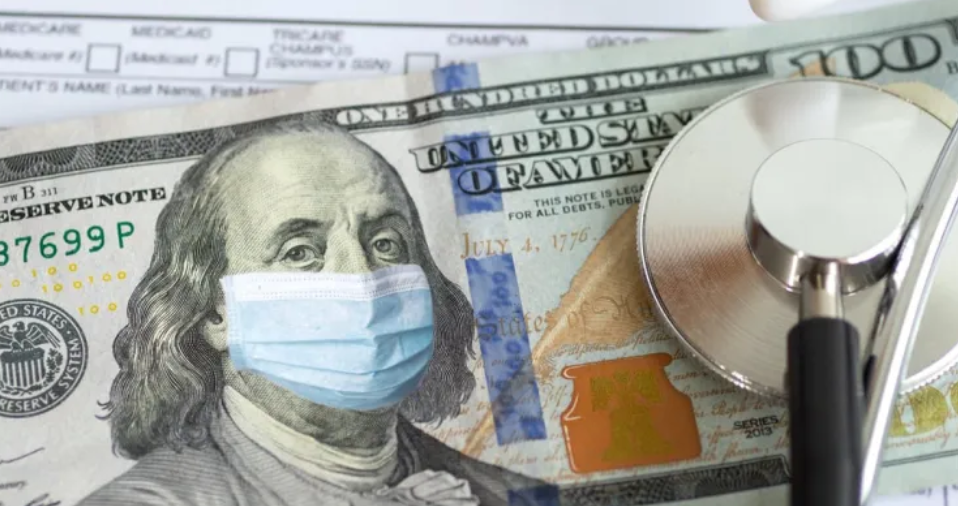Healthcare spending in America fast approaches $4 trillion a year. The dirty secret is – most healthcare isn’t actually that expensive to provide.
There is a vast difference between what people are charged and what it costs to deliver care. A study published in Health Affairs found that hospitals were charging 3.4 times the cost of patient care on average. At the 50 so-called “greediest” hospitals, they were charging more than ten times the actual cost, and typically pricier hospitals are no better than the cheaper ones. Retail prices for hip and knee replacements can range from between $11-$70,000 depending on where in the states the operation takes place and in which hospital.
There has been a massive increase in the proportion of administrative staff necessary to comply with the complex array of regulations as compared to the number of doctors and nurses. In December 2011, the Administrator for the Centers for Medicare & Medicaid Services, Dr. Donald Berwick asserted (as he was leaving his job) that 20-30% of health care spending in the US is going to waste. He listed the five major causes as over-treatment, failure to coordinate care, the administrative complexity of the system, burdensome rules, and outright fraud.
Here are some of the main causes of waste: Unnecessary tests ($200-800bn(!!!).) Fraud ($58.5-$83.9 billion), overtreatment ($75.7-$101.2 billion), failure to coordinate care ($27.2-$78.2 billion). And the administrative complexity of the system ($265.6 billion.)[1] More than enough money to end world hunger. A 2019 article in PubMed puts Waste in the US Health Care System at between $760 billion to $935 billion but I’d say that’s an extremely conservative estimate because that’s according to the criteria of the current system. If you reformed the system itself you’d save at least twice that.
The American system is replete with people ordering expensive treatments with large profit margins where cheaper treatments will do an equal or better job with less side effects. Stacks of unnecessary treatments are performed every year and especially unnecessary tests which bring in lots of money.
You’d think private insurers would act as a check-and-balance, negotiating to keep care costs down so they could offer competitive premiums, but actually, they get a kickback– ahem!– sorry! I mean an Administration fee, when they pay out, called a reimbursement. The more they pay out, the more they can claim back. I still don’t fully understand why they don’t do a better job of policing wasteful spending and ineffective treatments, but fear of litigation for refusing pay-outs and regulation that limit competition in the insurance market play some role. As is the fact that because people change jobs several times in their life, even if people get sick later it will probably be some other insurance company’s problem.
Government spending on healthcare has inflated costs in the US rather than making provision affordable because private hospitals and pharmaceutical companies account for the fact patients are being subsidized and increase their rates. For example, in 2014 Gilead Sciences introduced a cure for hepatitis C named Solvadi and marketed it at the astronomical price of $1000 per pill. The cost of treating every American infected with it would have been $268bn – about the amount Americans were already spending on all prescriptions over the course of a year. Medicaid budgeted $1.3bn to pay for the drug, but when faced with rationing, Hepatitis C sufferers filed a class action lawsuit in which they accused Medicaid and private providers of violating the law by refusing to cover medicines that were approved by the FDA. In other words, they demanded the government pay $1000 per pill to treat them! Sadly, this was not an isolated incident either. I meant to cover how we could reverse overspending on healthcare in far more detail in my up-and-coming book Big Pharma – None Dare Call It Quackery. In the meantime, please download my free ebook 7 Pharma Myths Debunked from 7pharmamyths.com.
With a few simple policies healthcare spending could be slashed down to $1 trillion while making everyone better off – except of course those profiteering from the system that exists right now! But, in my opinion, even they would be better off spiritually – if not financially, due to my reforms:
“For what does it profit a man to gain the whole world but lose his soul?”
You are making people sick and poor!
[1] William H. Shrank, MD, MSHS; Teresa L. Rogstad, MPH; Natasha Parekh, MD, MS (2019) “Waste in the US Health Care System: Estimated Costs and Potential for Savings” JAMA. 322(15):1501-1509.
Source: The Conscious Resistance Network


Be the first to comment on "You Definitely DON’T “Get What You Pay For” (when it comes to healthcare)"